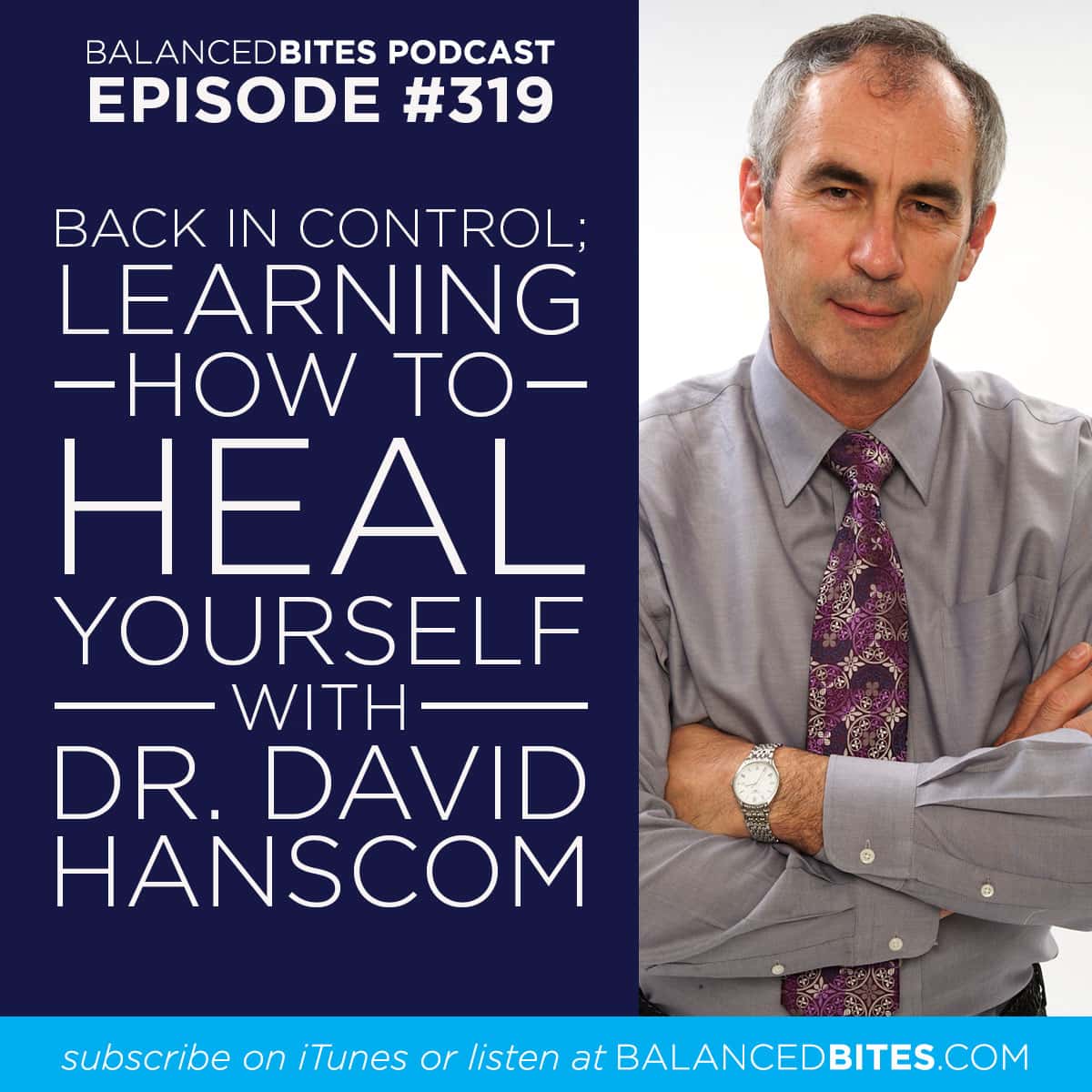 Topics
Topics
- Introducing our guest, Dr. David Hanscom [1:46]
- Neural pathways and chemical responses [7:29]
- Embedded pathways and getting around them [12:53]
- The forward to Back in Control [20:00]
- Considerations before surgery [24:17]
- Back in Control; the book and the website [29:48]
Subscribe to DianeSanfilippo.com
The episodes are also available in iTunes, Spotify & Stitcher.
Visit Dr. David Hanscom's website – Back in Control
Grab Dr. David Hanscom's book, Back in Control – http://amzn.to/2yLTIwz
![]()
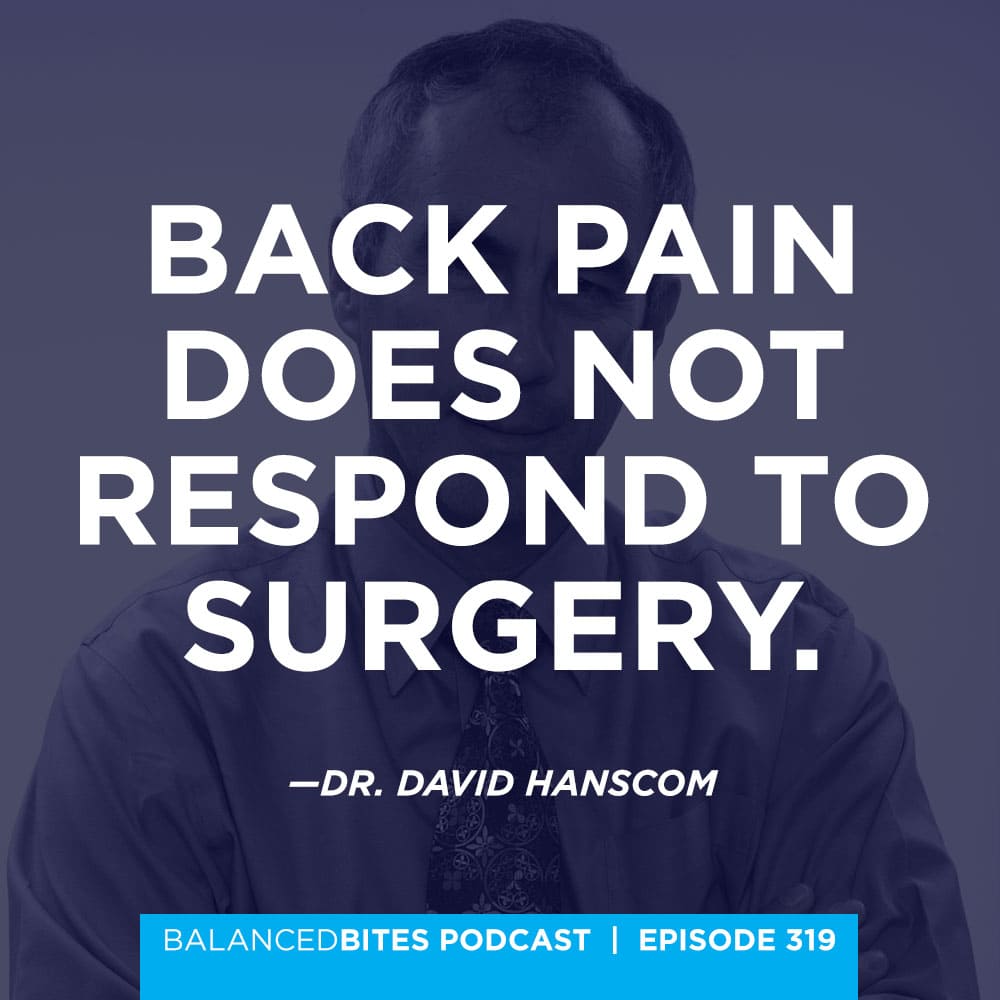
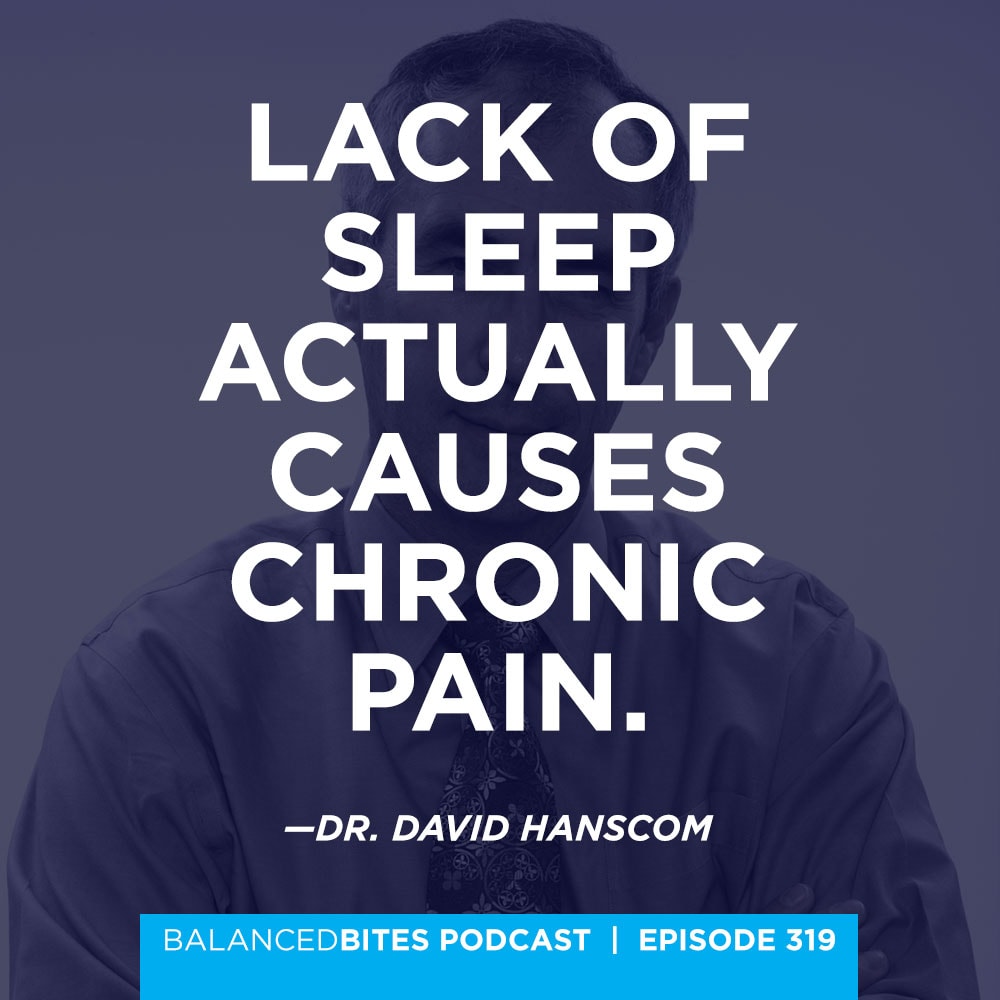
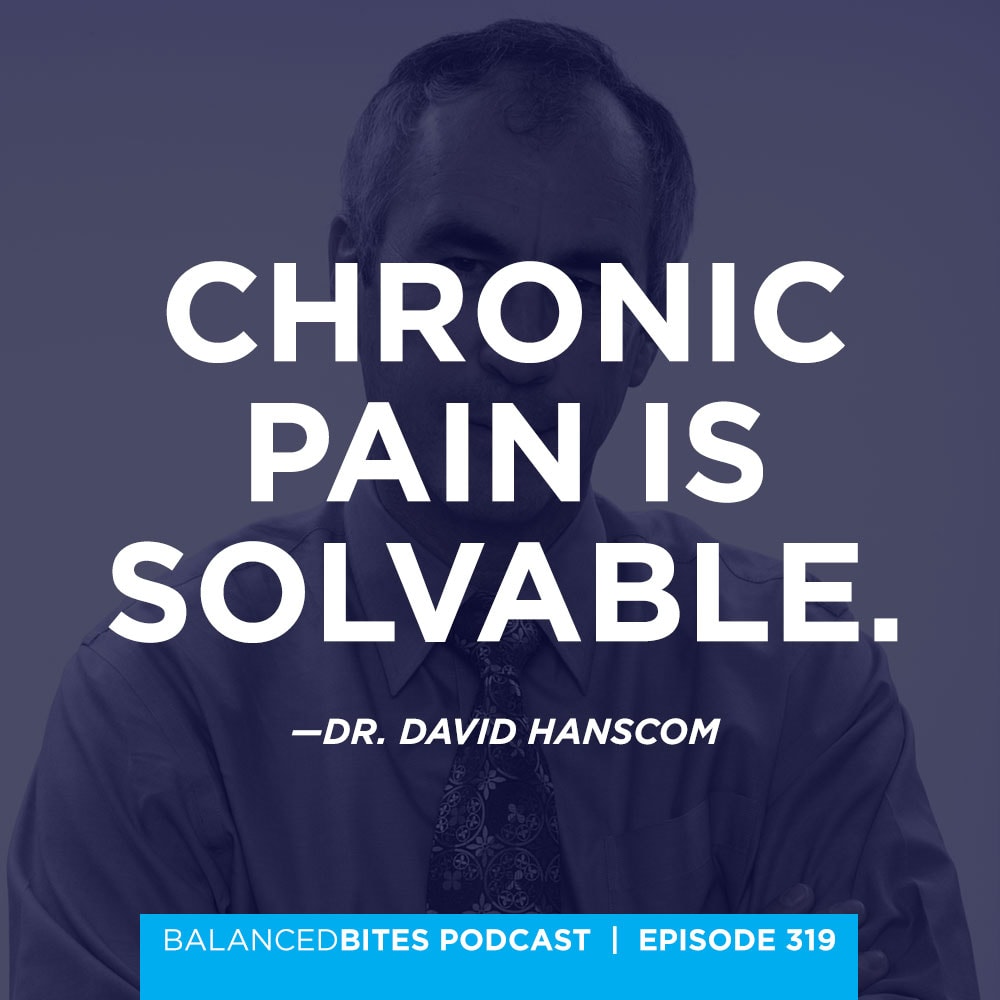
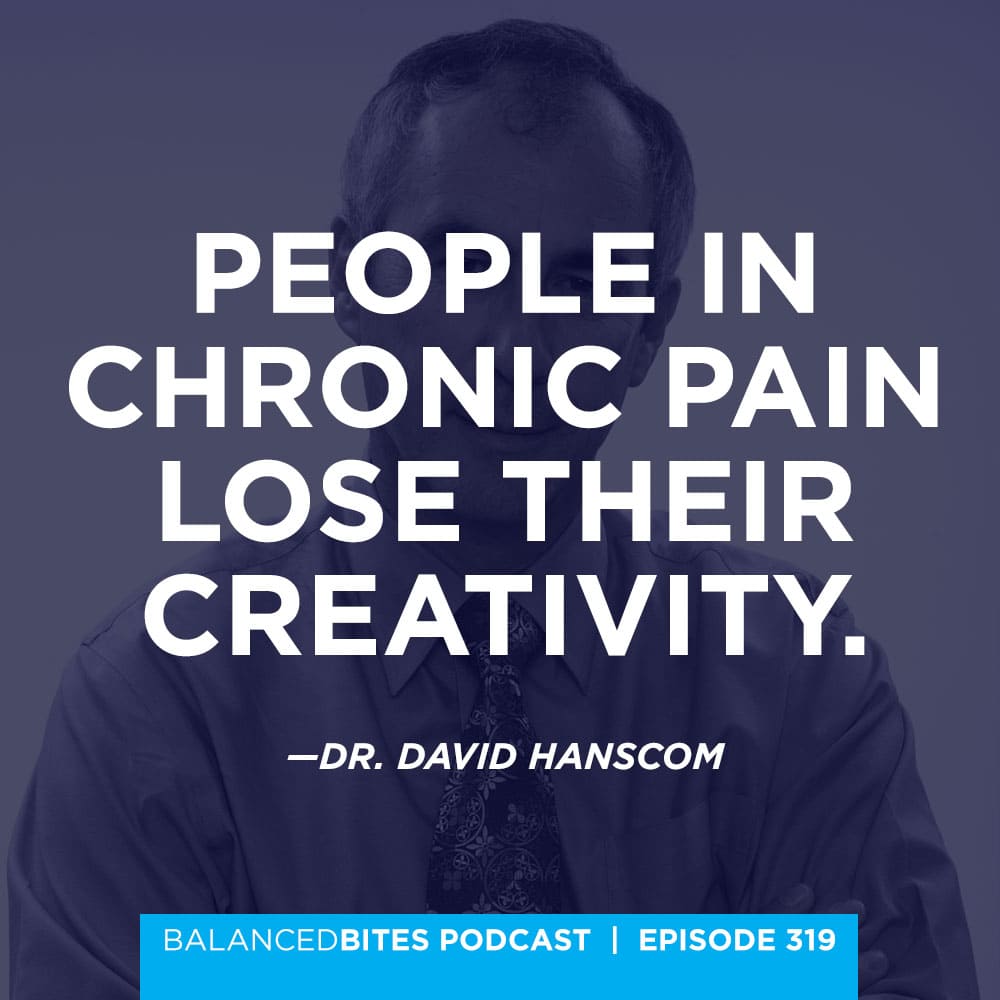
You’re listening to the Balanced Bites podcast episode 319.
Liz Wolfe: Welcome to the Balanced Bites podcast. I’m Liz; a nutritional therapy practitioner, and author of the Wall Street Journal bestseller Eat the Yolks; The Purely Primal Skincare Guide; and the online program Baby Making and Beyond. I live on a farm in the mystical land of the Midwest, outside of Kansas City.
Along with my partner in crime and cohost, Diane Sanfilippo, this award-winning podcast has been coming at you for nearly 6 years. We’re here to share our take on modern paleo living, answer your questions, and chat with leading health and wellness experts. Enjoy this week’s episode, and submit your questions at http://blog.balancedbites.com or on our Instagram page, Balanced Bites podcast.
Remember our disclaimer: The materials and content within this podcast are intended as general information only, and are not to be considered a substitute for professional medical advice, diagnosis, or treatment. Before we get started, let’s hear from one of our sponsors.
Liz Wolfe: The Balanced Bites podcast is sponsored in part by the Nutritional Therapy Association. The NTA trains and certifies nutritional therapy practitioners and consultants (including me; I’m an NTP), emphasizing bio-individuality and the range of dietary strategies that support wellness. The NTA emphasizes local, whole, properly prepared nutrient dense foods as the key to restoring balance and enhancing the body’s ability to heal. Nutritional therapy practitioners and consultants learn a wide range of tools and techniques to assess and correct nutritional imbalances. To learn lots more about the nutritional therapy program, go to http://www.NutritionalTherapy.com. There are workshop venues in the US, Canada, and Australia, so chances are you’ll be able to find a venue that works for you.
1. Introducing our guest, Dr. David Hanscom [1:46]
Liz Wolfe: My guest today is Dr. David Hanscom. A complex deformity spine surgeon, and author of the book, Back in Control: A Surgeons Roadmap Out of Chronic Pain. This book is fascinating, and has helped countless people in their journey out of pain without surgery. And it has also helped people, like me who deal with fear and anxiety, without the component of chronic pain. It has been profoundly impactful for me, and I was so thrilled that he was able to come on the podcast to share more about his approach and what makes it so powerful.
What Dr. Hanscom talks about is applicable to nearly anyone; not just those with chronic pain. But also those struggling with the physical manifestations of anxiety. I found myself highlighting something on almost every page. So I’m so thrilled to be speaking to Dr. Hanscom today. Welcome to the Balanced Bites podcast, sir.
Dr. David Hanscom: Thanks. I appreciate being on your show. I’m also excited you're doing well. That’s, of course, what keeps me going. Is that people do do well. And it’s been a lot of fun. It’s been a really unexpected phase of my career.
Liz Wolfe: Well, your work has absolutely changed my life. And it did so; I don’t want to say it was a quick fix, because it’s not. But it was one of those things that just flipped the switch for me. And it was exactly what I needed in the moment that I needed it. So it was actually recommended to me by a friend, Kristine Rudolph of Exploring Wellness. And I have seen it spread kind of virally among my friends and my contacts. Many of whom struggle with things like chronic disease. And not even necessarily pain. And we’ll talk about that.
First, I’d love for you to just describe a little bit about your personal experience. What led you to write this book and become this spine surgeon who does less surgery than perhaps his colleagues?
Dr. David Hanscom: Well, what happened is that I came from a very challenging childhood. Like many people. I used to think I had a corner on the market, but I don’t. And I had an abusive childhood. My mother was probably psychotic, in retrospect. Very abusive to her family. And my way of coping was achieving. And at 15 years old, I basically shut the door on my life with what the psychologist would call dissociating. And just became an over-achiever.
So I got good grades, I was an athlete. I did all the things I was supposed to do. I ended up going to one of the top spinal clinic fellowships in the country in 1985, Minneapolis, Minnesota. And I did fine. It was considered one of the top three fellowships in the world. And I didn’t get there by having anxiety. But by 1988 to 1990, I started having sweats that were unexplained. And I started having; I wouldn’t call it anxiety, but things just didn’t seem right.
And then in 1990, all of a sudden I developed a panic attack. And I’m going, “What’s this?” Because I honestly didn’t know what the emotion of anxiety was. Because as a surgeon, you get used to suppressing stuff like that. You just have to do that to become a surgeon. So your body doesn’t lie. And what happens when you suppress anxiety; of course, it makes it worse. Jumping way ahead in the story; we’ll talk about this more later. It turns out anxiety is just a chemical reaction to the environment. It’s just, it’s part of the unconscious survival reaction. And what happens is that when your suppressing it, your body is still full of adrenaline. And I was developing symptoms likes ringing in my ears. Burning in my feet. Stomach issues. Back pain. Neck pain. Couldn’t sleep. And once I developed that panic attack, it just went downhill very, very quickly.
So for the next 13 years, I was just a mess. And the last 7 of those years was just a disaster. And the anxiety evolved into a full-blown obsessive-compulsive disorder from about 1993-1994. And it wasn’t until 1997 that I understood what was called internal OCD, which is manifested by intrusive thoughts. And then you have counter thoughts. So you don’t have external manifestations of it. But your brain is just going 100 miles an hour. Or 1000 miles an hour.
So I was just miserable. And I got very, very lucky coming out of this around 2003. It took me another 5 years to figure out what happened. And in 2006, I started sharing this truth with my patients. And slowly, I found out many things that didn’t work but also found out many things that did work.
In 2011, I heard a lecture by Dr. Howard Schubiner out of Detroit who was the author called Unlearn Your Pain. And he had trained under Dr. Sarno, and was the one that described when you're suppressing emotions, particularly anger, why your body responds chemically.
So, I didn’t know what had happened. I heard Dr. Schubiner’s lecture and all of a sudden the whole thing made sense. It turns out there are over 30 symptoms of a chronically adrenalized nervous system. And I had 16 of them at the same time. And in about 45 minutes, I had my answers as to what had happened. So I have been free of pain since 2004, I would say. And as my wife, as wives do, aptly points out that if I quit using the tools that I teach my patients, my symptoms come back.
So the bottom line is, you can de-adrenalize your nervous system and calm down. And as you change your body’s chemistry, the symptoms start to disappear. And I’m excited about your journey. That’s what happens. People’s anxiety drops, and their quality of life improves, and it’s a remarkable transition.
2. Neural pathways and chemical responses [7:29]
Liz Wolfe: Oh, it’s incredible. And one of the things that you said was, in your history as a surgeon, and part of the way that you're successful in that field is to suppress things. And what was interesting to me, my experience is just a fraction of what you and so many other people have been through. But I felt like; wow. As a mom to a toddler; I was a new mom a couple of years ago. And that’s when things kind of started to become a struggle for me. But as a mom, you kind of get used to suppressing things too.
Dr. David Hanscom: Right.
Liz Wolfe: You just have to perform. You have to be ok for these little beings that you're responsible for. And over time, I started dealing with poor sleep. Of course, that’s another thing. And we’re going to talk about sleep in a moment, because you're very clear about your requirements for getting people sleeping in your book. But ringing ears. Heart palpitations. These symptoms that I thought were either all in my head or structural. I thought there was something wrong with my heart. And we did all of the tests, and nothing was wrong.
So what really struck me about your book was learning that it’s not “All in my head.” It is physical. It has to do with neural pathways, right? But not necessarily structural. So can you talk a little bit about those neural pathways and how they might apply to pain and anxiety?
Dr. David Hanscom: Well there are two things to consider. One of them is you're basically, the way human beings survived on this planet, is that we process sensory input from all sources. And the eyes are the richest concentration of sensory receptors. And these sensations are part of the unconscious nervous system that protects us. So as you're sitting in your chair, your body is unconsciously shifting so your skin doesn’t break down. Or you're not staring in a bright light. So every sensation is interpreted as positive, neutral, or negative.
What the brain does; it keeps you mostly in a neutral zone so you're not too comfortable or uncomfortable. You sort of stay in a range of behaviors that is safe. So what happens if you have nice music, like a symphony, or warm water, or lying in the sun, your body is secreting chemicals like oxytocin and dopamine, which are the reward chemicals. Then you feel relaxed. So when you feel relaxed, you're just feeling the chemical surge.
When you have loud sounds, bright lights, things that startle you, then your body secretes survival chemicals like adrenaline and cortisol, then you feel anxious. When you feel anxious, you're feeling this chemical surge. The reason why you can’t treat that psychologically is because that is using rational means to deal with these irrational reactions. It’s a million to one ratio.
So what the research is showing, which is fascinating. And I didn’t know this in my first book. Is that thought in humans to the same thing. In other words, every creature has an anxiety survival response that keeps them safe. Humans have the additional issue of consciousness, which obviously is an advantage for survival. But it’s also a curse in that thoughts do the same thing; where pleasant thoughts give you reward chemicals and relaxation, and unpleasant thoughts give you stress chemicals and anxiety.
The problem is that you cannot escape your thoughts. So if you suffer them, they get worse with time. If you suppress them, it seems to work for a while. But at some break point, every human being has to deal with this. And I’ll explain in a second how we do that. Because everybody feels anxiety, but there are some significant reasons why.
And then the final thing is we mask. And we think that thought suppression is a major factor in opioid addiction. The problem is, we can be trapped about anything. Whether it’s pain or unpleasant thoughts, you become angry. And it turns out that anger and anxiety are the same thing. So what the intro for anxiety course controls; in other words, if you change a situation to remain safe, or it gets your need met, and then it’s problem solved and the chemicals go back to normal.
When you can’t get those needs met, then your body secretes adrenal in an attempt to improve your changes of solving the problem. So basically anger is anxiety on adrenaline. So the problem is, anger gives you the feeling of power, which covers up the feeling of anxiety, which is vulnerability. So people either suffer, suppress, or mask. But one way of effectively covering up anxiety is to remain chronically angry.
So every human being has to deal with this. And anxiety gets worse as you get older, because it’s a repetition pathway. So it’s a programming problem. It’s like an athlete learning a skill. So what happens is these impulses get imbedded in your brain, and once they are imbedded they are permanent. So they become stronger with repetition. Of course, even strong with suppressing them. And once they're in there, they’re permanent.
So any of these permanent imbedded pathways that are still in your body secrete stress chemicals, and you're stuck. As human beings we’re stuck with these adrenalized nervous systems.
3. Embedded pathways and getting around them [12:53]
Liz Wolfe: I’m getting chills just listening to you speak. So one of the things that really got to me in reading your book was that connection between anxiety and anger. Because at first I didn’t want to believe in my experience that I was angry. Because it made me feel like I was angry at my child. But the way I kind of thought about this, was its more my body being angry that I can’t get out of this situation that’s causing the anxiety. Because of course, I love my child and I’m not going anywhere. So it made sense to me that I was having these reactions because I couldn’t change my situation. I needed to find a new way to thrive in it. And that was a really big ah-ha moment for me.
And one of the things I’ve told people, especially new moms, is it’s really important to give yourself grace. If you're struggling, it’s really important to just acknowledge that and not feel like you have to find a way out of it. However, something that I learned from you was that the longer that we stay in this place, the longer we reinforce these pathways, the deeper and more engrained they get. So it becomes more work to kind of get out of them. Would that be accurate?
Dr. David Hanscom: Well, first of all you can’t. So this is the paradox of the process, which is actually the good news. Once you understand that all these pathways are embedded and they are permanent. And by the way, the neuroscientists are really clear that what happens with chronic pain, again.
First of all, social isolation, social pain, and physical pain are considered the same entity now. In other words, these thoughts that are unpleasant go to the same part of the brain that unpleasant physical sensations go to. So whether it’s mental pain or physical pain, it’s basically the same entity. So it turns out that this chemical surge in anxiety is the pain. It is the same entity. So that’s really clear to understand that.
So then when you're trapped by anything. It doesn’t really matter what it is. Whether it’s money, finances, job, relationship, pain, whatever it is, your body is full of adrenaline. Again, once it’s embedded, and obviously I had a huge childhood full of anger which I didn’t recognize because it was my norm, right. So I was talking to a viewer the other day and it hit me that my entire nervous system is based on anxiety and anger. That’s what I was raised in. That’s all I know. So I can’t get rid of that. I can’t solve it. It’s part of the unconscious brain. It is who I am.
But once you realize that you cannot solve it, we spend a huge amount of energy talking about it, analyzing it, trying to fix it. Once you realize you can’t solve it, you simply let it go. In other words, you separate and go a different direction. The metaphor I like to use is directing a river into a different channel.
So once you decide; I think you understand these writing exercises. I’m guessing you probably engaged in some of those writing exercises?
Liz Wolfe: Yes. That’s what I’d love to talk about next.
Dr. David Hanscom: And what happened is that we don’t really know why it works. There are over 300 research papers that points out that these different forms of writing work. In my first book I talk about negative writing, as most research has been done in negative writing. Because when you suppress negative thoughts, of course you reinforce them. It turns out it doesn’t matter. It turns out it could be positive or negative. I call it now expressive writing.
What you're doing is you can’t escape your thoughts, but you can separate from them. And so what I have people do is I have them simply write down them thoughts. I do it every day. I’m going to do it again this morning once we’re done with the interview. And what happens is thoughts are on paper, you're physically separate from these thoughts. That space is now connected by vision and feel. So you're now separated from your thoughts.
The reason why I have people tear these up instantly is first of all write with freedom. Whatever thoughts come up, it is what it is. Second of all, the goal is to not analyze them. Because if you analyze them, you're actually reinforcing the pathways. And you can’t fix yourself. So what you're doing, you're separating, done. And so when you reprogram the nervous system, you're going to create an awareness of the automatic survival reaction, or the influence of your thoughts. You now separate it, and then you redirect.
So that’s where things like meditation, mindfulness, a cup of coffee, giving back. Whatever you want to do to make the world a better place, or to nurture yourself, that’s reprogramming. The reason why it’s so critical to put the writing in there as a link that if you're meditating or doing mindfulness or doing good deeds to help ally your anxiety, if you're doing these enjoyable things in life to escape anxiety and fear, you can’t do it. Because again, that’s the unconscious survival reaction. Which again really is a million times more powerful than the conscious brain. So you have no chance. It’s like trying to take down El Capitan with a pick axe.
Liz Wolfe: {laughs}
Dr. David Hanscom: So once you understand that you cannot solve this unconscious survival response, the energy you have to live your life just goes through the ceiling. And I’m guessing you’ve already felt that.
Liz Wolfe: Yes. 100%.
Dr. David Hanscom: So I write every day. It doesn’t take very long. Maybe 3 to 5 minutes, once or twice a day. And what’s fascinating in the research that it helps student performance, athletic performance. It helps rheumatoid arthritis, asthma; all these physical symptoms start to disappear. What happened on my journey after 15 years, I happened to read a book called Feeling Good by David Burnes. And David Burnes said to write. It’s a great book. I really think the book is remarkably positive. It’s based on cognitive behavioral therapy. But really what the power was was in the writing. And when I wrote the first book, I didn’t realize that there were over 300 research articles that showed the writing exercises work.
So after 15 solid years of doing psychotherapy, medications, everything you can imagine, within 2 weeks after the writing started my symptoms started to shift. And by 6 weeks, my anxiety had dropped down by about 60%. But I still wasn’t cutting through it. What I didn’t realize, I was such a master at suppressing anger, and I did not realize anger and anxiety were connected. I was going through a very difficult personal time at that point in time. And all of a sudden, I had to confront the fact that I was angry. Because it just exploded. It was not very pretty. And I struggled like crazy to figure this out.
But within about 6 weeks after I passed that gauntlet, my symptoms started to disappear. And a year later, I was fine. And my patients now the neuroscientists have a saying, the neurons that fire together wire together. So chronic pain causes anxiety and frustration. And these are pathways. In other words, the pain pathways are coming into your brain. Those get embedded also, just like other thoughts. Anxiety increasing pathways get embedded. And they get linked.
So you actually cannot really heal chronic pain until you get past the anger threshold. I mean, you can get better. But to really solve it. And I’ve watched hundreds of patients do this. Is that once you actually successfully navigate the anger pathway, people heal. Remarkably so.
4. Mark Owens’ story [20:00]
Liz Wolfe: Well, the forward to your book was really, really just fascinating. This is, I don’t know what to call him. A scientist, a biologist, an explorer; all of the above. Mark Owens, I believe. Is that right?
Dr. David Hanscom: Yeah, Mark has become a good friend of mine. I just talked to him yesterday, in fact. He is one of the true heroes of all time. He is somebody that at 29 years old went with his wife to Africa to save elephants. He and his wife heard a lecture, and they decided there was a problem. So literally, without any money, they went to Africa. Went to a part of Africa that no human beings had ever gone, including the natives. They had no gun. They had a land rover. They had no real supplies. They had no guides. Nothing. It’s an unbelievable story. And he did it. They still have an elephant reserve in Africa set up by him, now run by the people that are there locally.
And he set up local economy so people would have to use poaching as an economy. To make a long story short, he only left Africa after his third assassination attempt.
Liz Wolfe: Oh my gosh.
Dr. David Hanscom: So he got back to the US, had a fractured spine falling from a horse. He had two surgeries, developed extreme chronic pain. High dose narcotics. Was very suicidal. He had two surgeons recommend about 10 hours of surgery to fuse his entire spine. He came to me for a third opinion. And when I saw him, I go, “Mark, there’s nothing there. There’s nothing to fuse.”
And we can maybe go into another conversation about sort of, I think medicine in general has become risky for people at many levels, not just spine surgery. But right now, there’s a real instinct to do spine surgery. The data of actually spine surgery solving back pain is about 22%. And Mark’s spine was normal. He had degeneration, but he did not have a surgical solution.
And one of the reason that drives me to write this book and keep pushing it, I’m just seeing endless people every week who have had major surgeries done on normal spines and they’re way worse. We’ve now surgically damaged their spine.
So what’s happened is there are more and more spine fusions being done. The young surgeons are taught this is what you're supposed to do. Nobody is really listening to the patients anymore, because the business of medicine is to increase the production of it. So we don’t get the time to understand what’s going on.
So Mark was under extreme personal stress at the time he developed the chronic pain after the fall. And so instead of solving the chronic pain with the concepts we were talking about, they did a second operation which made his pain way worse. So within about 3 days after 9 years of extreme chronic pain, after he started at that point called negative writing, his pain dropped 80%. Six weeks later he came to this workshop I put on almost every year. And the only question he had to ask me was, “Can I ride my horse?” And right now, we put a video together of him. He’s chain sawing, riding horses, climbing mountains, hauling his pack horses through two feet of snow. He’s unbelievable. He’s 72 years old, and he looks like he’s 60. So he has no pain. So we went from 10 hours of surgery recommendation to absolutely no pain. No meds.
Liz Wolfe: This episode of the Balanced Bites podcast is sponsored by our friends at Primally Pure Skincare. Primally Pure makes 100% natural and nontoxic skincare products that support radiant skin, a healthy body, and a happy self. They use ingredients like tallow from grass-fed cows; organic and fair trade coconut oil, and organic oils, herbs, and extracts to formulate effective products that also smell amazing and look beautiful sitting on your bathroom counter.
At www.primallypure.com, you’ll find their bestselling natural deodorant that actually works; face mists made from locally sourced and organic rose and orange blossom hydrosols, and their brand new baby line. You’ll also find Diane’s favorite Primally Pure product, dry shampoo, and Liz’s favorite, that’s me, the Everything Spray with magnesium. As a special bonus for you, Primally Pure is offering a free lip balm with your first purchase of one item or more. Simply add a lip balm to your cart along with any one item, and use the code “balancedbites”, one word no caps, during checkout to receive one of their lip balms for free with your order. Head to www.primallypure.com and check out their range of safe and effective all natural skincare products.
5. Considerations before surgery [24:17]
Liz Wolfe: Amazing. And to read his story of the accident that kind of set the ball rolling, in the forward to your book. When I was reading that, I thought, “There is no way. There is no way that this person is going to say that expressive writing was the catalyst for his recovery.” And lo and behold, that is exactly what it said. Is that expressive writing was the beginning of his recovery, and not surgery.
Dr. David Hanscom: Right.
Liz Wolfe: And it is fascinating to me that your research showed; and I think I will describe this correctly. But your research showed that many of the symptoms that back pain suffers have actually don’t correlate to any structural abnormality or even a need for surgery.
Dr. David Hanscom: Here’s what’s become fascinating, and a little bit tricky for me right now. What the data show; I did an article about a year and a half ago on the role of non-operative care and chronic pain. And there are hundreds, probably thousands, of research papers that show that sleep, stress, medications, physical conditioning, all have an impact on pain. It’s been documented in multiple, multiple randomized control studies.
And it’s also been shown that if you ignore those factors before you do surgery, you have a surgical outcome most of the time. And that I’ve known for almost 30 years. Another paper came out that showed that only 10% of surgeons are actually acknowledging those variables.
So the data again shows where if you operate in the presence of chronic pain, you can actually induce chronic pain at the new surgical site up to 40% of the time. In other words, if you have chronic neck pain, and you have a hernia repair done, you can induce chronic pain at the hernia site up to 40% of the time. And up to 10% of the time, it can become permanent.
So if had a 10% neurological complication rate, I wouldn’t be in business, right? Surgeons aren’t actually taught this. That you can actually cause pain at the new site up to 10% of the time, that is permanent. And that’s a big deal.
So then what we started about 5 years ago; my nurses said, “Look. Your patients are doing so much better by dealing with these variables ahead of time.” By the way, that’s what the literature says. That we normalize sleep, people do expressive writing. I have them go through the website. I would not do surgery unless they started the expressive writing, calmed down. I wanted their back pain gone. Back pain does not respond to surgery.
So I do a lot of surgery for leg pain, and the surgical results started becoming unbelievably good. But what happened, which is very shocking, is that we have over 80 patients now with severe structural problems who canceled the surgery because their pain disappeared. So it’s devastated my elective surgical practice, which I don’t want to feel bad about. It’s a little tricky in this reimbursement age.
So my first book tells people if you have a structural problem in the presence of chronic pain, operate earlier. Because people in chronic pain don’t tolerate the stress of a structural problem. And it’s the opposite. If you operate in the presence of chronic pain, the data says pain gets worse.
So we find out by getting people to sleep, which is the number one thing. Dealing with the writing exercises, relaxation, forgiveness is huge. Physical conditioning, medication adjustments. All those things that are basic primary care, by the way, people’s results are spectacular and their pain disappears, regardless of the source. It doesn’t matter where the pain is coming from. Structural, tendonitis, soft tissue. It doesn’t matter. Your brain is interpreting every impulse as pleasant or unpleasant. You literally can reprogram almost anything.
So the data shows also for hip arthritis, knee arthritis, shoulder arthritis, even the presence of bone-on-bone arthritis, people can go pain free without the surgery. What is happening in the joint replacement world is that, still, people are not doing the sleep, the stress. They simply see arthritis and Bam! Let’s do surgery. And that’s not necessarily the right decision all the time. I know it’s hard for people to believe that you’ve got bone-on-bone arthritis in your knee that the pain will go away without surgery, but I see it all the time.
Liz Wolfe: So would you say that it’s accurate for me to make the statement that anxiety, anger, and pain neural pathways are the same. That’s what you're saying, right?
Dr. David Hanscom: I would use the word equivalent.
Liz Wolfe: Equivalent.
Dr. David Hanscom: Yeah. And what I’m humbly saying is that, the neuroscience research is profound. And every month, a different set of papers comes out to show there’s oscillation patterns. It’s like snowflakes. There are so many different ways a brain can act. There are 80 billion nerve cells. They estimate that the connections in the brain are actually more, on a given person, there’s actually 50 trillion cells in the human body. There are actually more connections in the brain than there are stars in the universe.
Liz Wolfe: Wow.
Dr. David Hanscom: So it’s an infinitely complex problem. But basically, as long as you're saying that the brain is complex, the conscious brain does incredible things. Very powerful. And those are equivalent entities. I’m sorry, let me say it differently. Anxiety is the pain. Whether the source is mental or physical.
Liz Wolfe: Anxiety is the pain, whether the source is mental or physical.
Dr. David Hanscom: Correct.
6. Back in Control; the book and the website [29:48]
Liz Wolfe: Got it. Amazing. And I know I only have you for about 10 more minutes, so I think we need to dig in a little bit to your approach in your book so people can understand a little bit more about what they’re going to get when they buy your book.
I do want to say quickly; I think this is important for my community. And I don’t know if this is something you’ve heard before or not. But in my community, adrenal fatigue is something that we talk about a lot. It’s basically the concept that chronic stress of varying kinds, it’s kind of ubiquitous, creates its own symptoms in the body that we’re calling adrenal fatigue. Basically because of the adrenals role in secreting these hormones that keep us alive.
But it’s more than that. And I think that your work is an amazing tool for folks who are struggling with this concept. Because you’ve basically legitimized the fact that cortisol, adrenaline, stress substances released by the body affect the entire bodily system. And sometimes in unpredictable and seemingly unconnected ways, like tinnitus, or heart palpitations. Is that accurate?
Dr. David Hanscom: Absolutely. It’s mind boggling. It sounds like snake oil, in a way. That’s what Mark Owen said, by the way. Says it’s snake oil. And he’s a PhD scientist. But I had 16 symptoms. And what happens when your body is full of adrenaline. First of all, when your trapped, you have the sustained adrenaline release. The metaphor I also use is like a car driving down the freeway in second or third gear. The engine is always racing, and it’s going to break down.
Liz Wolfe: Yeah.
Dr. David Hanscom: So first of all, you're fatigued, because your body is always under this stress. Every organ system is going to respond in its own way. For instance, adrenaline shuts down the blood supply to the frontal lobe of the brain. It shuts down the blood supply to the gut and the bladder. It increases the heart rate. It increases sweating. So each organ will respond in its own unique way to the adrenaline, but they’re all going to respond. That’s why there are over 30 symptoms of an adrenalized nervous system.
So I don’t way to say this in a way to upset the psychologists. Psychology has a huge role in this. But this is not a psychological issue, it’s simply a chemical reaction. And it’s way more logical; I mean, 99% of the symptoms in the body are based on the body’s chemistry and response. In other words, you have an inflammatory response and you have a cold, that’s not imaginary when you have a runny nose or clogged ears. Because your immune system has an inflammatory response.
So the adrenaline even affects your immune response. So if you have elevated levels of adrenaline and cortisol, you dampen your immune response. And we do know that stress kills. People have a higher chance of developing cancer when they have chronic stress. Because what happens is the immune system is compromised. I don’t have the data on autoimmune disorders, but there’s a strong suspicion that eventually the autoimmune disorders are going to be shown to be related to the sustained adrenaline response.
So that’s why when you decrease the body’s adrenaline, whatever way you want to do it. That’s why mindfulness and meditation alone do have some effect. But you have to really, truly separate before you can move forward.
That being said, I still have to really spend a little time on stage 2 of my website, which is about forgiveness. Dr. Luskin out of Stanford wrote a book called Forgive for Good. It’s when that book came into my practice that people started to heal. Because you cannot really heal if you're holding onto anger. Because you have a massive adrenaline release. And you have to actually let go of your deepest wounds. And it’s not in the electrical process.
Dr. Luskin points out it’s a process; those are permanent pathways. You're not going to get rid of them. You don’t have to be happy about things that are happening to you that are bad. But forgiveness is actually a fairly selfish action, because you're simply taking your life back. You're saying, I’m not going to let this person take my full life. And he did two of his research projects with the parents of children who had been murdered, who obviously had a very legitimate reason to be angry. But those murderers, who they despise, and rightfully show, have now taken the rest of your life. Because you're permanently angry.
It’s also been shown in research that 95% of patients in chronic pain are angry at the situation or person that caused the problem. But most interestingly of that research is that the people they’re most angry at is themselves. So you can’t really truly heal unless you look over the anger, or process it. I’m going to use the word process it, and not suppress it. It’s bad enough suppressing anxiety; it’s even worse suppressing anger. Because your body gets really adrenalized. So that’s where you actually learn to live with uncomfortable emotions.
And I would love to do another podcast in the future just on forgiveness. Maybe even another one on family issues. Which are quite profound on chronic pain. So it’s one thing to do the writing and relaxation tools. That’s the basic starting point. But going deeper, it’s really a massive life change. You simply learn to become aware of the effect your anger has on you. You become aware of your reactions. You become aware of how deeply this reaction goes. And you just start learning to truly let it go.
There’s a book that was given to me by one of my colleagues that I now have on the website, stage 2. It’s called The Way to Love by Anthony de Mello. It’s a very profound book on how you have to take responsibility for every emotion that you have. So if your spouse makes you upset, it has nothing to do with your spouse. That person only triggered your neurological system to have an anger response. And so it’s incredibly clear about taking full responsibility for your own thoughts and actions. So that’s, again, one of those issues that’s made a big difference.
So there is sort of the mechanical part of the awareness, separation, reprogramming; the writing versus relaxation. But there’s a lot of deeper issues here about the forgiveness/letting go. Another step beyond that is play. The antithesis of anger is play, right? And then the final phase is getting your perspective back. People in chronic pain lose their creativity. They lose their life goals. They lose their life visions. So shifting off pain pathways onto different pathways. So as you reengage with family, friends, giving back, perspective, your brain first of all starts developing new pathways. But you move way away from the pain pathways.
So you can always be triggered. I’m still triggered 15 years later. And again, when the triggers happen, I go all the way to the bottom every time. But I’m not in there for days and weeks. I’m in there for hours and sometimes days, which I’m not very happy about. Nonetheless, you can’t suppress the triggers.
So there are a lot of subtleties there to look at that aren’t hard. And I’m becoming more and more aware myself. I’ve probably learned as much in the last 6 months as I’ve learned in the prior 5 years. So as you learn, your brain changes. You can hear the same information 6 months later and it sounds different because your brain has changed.
So the way I ask people to actually engage in the process is to look at the book as a source of information. I’m saying the book is just a book. It’s not going to solve your problem. And the reason I put the website together is that people read the book, and they go, “Dr. Hanscom I read your book and I still hurt.” And you go, ok I get that. But what you're doing, you're trying to precipitate a major shift in yourself, and you can’t force it. You can let it happen, but you can’t fix yourself. Because where’s your attention. It’s on yourself. So you reinforce the same pathways. Again, the writing simply separates you, and then you have to redirect.
So again, the writing combined with this simple meditation is an awareness separation reprogramming. The second stage is forgiveness, which again is an awareness separation that’s much more complex, but really critical to separate. And I combine that with the word play, because that’s a complex way of actually moving forward in a different direction. And then to me the last part about giving back really puts your brain in a different direction. It’s very powerful and enjoyable, etc.
So there are layers to it that you get better with repetition. So it’s not like you read the book and solve the problem. And what’s exciting is that once you intuit a slight feel of what it’s like to reconnect with the best part of who you are, your brain will start finding ways to get back there. And it’s just a matter of time and repetition.
So let’s say you're my patient in the office. And you’ve had chronic neck pain for a few years. I first of all will try to find out if you’ve been under extreme stress. Which again, most people are these days. We’ll talk about that just a little bit. And say, here’s the book. Here’s the website. I’m going to ask you to go to the website first before you start reading the book. And we’ll go to stage one, and I want you to do three things. One of them is to start the writing exercises tonight. Nothing really happens until the writing begins. So if you’ve never read my book, never did anything else, please start the writing.
The second thing is combine it with what’s called active meditation where you combine the writing with simply putting your brain in a sentry input. It’s an abbreviated form of mindfulness. And the third thing I have them do is simply never discuss their pain again, ever, with anybody. And then with evolve, in which I’d love to talk to you about a little bit later is the family issues. Because the family issues are huge triggers for pain. And there are ways of actually flipping that around. So instead of the family being a source of pulling you back into the pain, your family actually becomes a source of pulling you out of pain.
But the family is a major obstacle to healing at this point for most people in chronic pain. So I didn’t realize how much people talked about their pain until a few years ago. And I said, “Look. When you walk out the door of my office, you will never, ever talk about your pain ever with anybody again. Ever. Period.” And their jaw just drops. They don’t know what to do. Because people end up talking about the pain a lot; but again, your attention on the pain pathways. One of the negative prognostic factors for chronic pain is to have actually been to a chronic pain support group. And people go to a support group and start “being supportive”, etc. Again, you’re reinforcing pain pathways.
So, that’s a huge paradigm shift. And I’ll see them back in two weeks. We’ll start the process. And it’s about 90% self-directed. You do not need to go to a major pain clinic to solve the problem. It’s about 90-95% self-directed. So I can tell you literally hundreds of stories now of people I’ve never met that email me all over the country and say, I’m fine. And I’ve never met them, I’ve never talked to them.
But between the book and the website, then again applying their own interpretation of the process to themselves, it’s incredibly solvable. So basically chronic pain is solvable, and the three steps are simply becoming aware of the problem. The second step is addressing every aspect relevant to you at the same time. The third part is you truly taking control of your own care.
Liz Wolfe: And it’s so brilliant. And the cool thing about this is it’s not a super expensive therapy session. It’s so easy. A book costs far less than a therapy session. And it costs far less than a whole lifetime of dealing with what you're continuing to deal with wherever you are. When you're in pain, and when you're anxious, and when you're angry. And even better, the expressive writing technique that is kind of that first step, and is so amazingly effective. I almost don’t even believe it, still to this day. It’s free. You’ve got a pen and paper. I’m guessing everybody listening to this podcast has a pen and paper. And you also describe it on your website for free. So you can start at the website at www.BackinControl.com. Grab the book from Amazon. It’s available on Amazon. It’s called Back in Control: A Surgeon’s Roadmap Out of Chronic Pain. And get started. You literally have absolutely nothing to lose.
I just think that your work is so amazing, Dr. Hanscom, and I thank you so much for coming on the podcast with us today. And hopefully we can have you back to talk a little bit more about some of this forgiveness and play.
Oh, if I could quickly ask you. One of your big things is you're very particular about sleep. Can you just reinforce that for me quickly? That sleep is one of the major tools for getting better?
Dr. David Hanscom: There’s a study out of Israel that shows a lack of sleep actually causes chronic pain. It’s not the other way around. So people think, “I’m in chronic pain, I can’t sleep.” Lack of sleep actually induces chronic pain. So I say, look. You can do all the writing you want. So you actually have to get sleep. No matter what happens; lack of sleep sort of negates the entire process. You have to sleep. So that’s one of the bigger deals, absolutely.
Liz Wolfe: Perfect. I can echo that for sure. Alright folks, Dr. Hanscom has things to do and people to see. But we hope to see him on the Balanced Bites podcast again soon. Thank you so much for coming on with us, Dr. Hanscom.
Dr. David Hanscom: Yeah, thank you. I enjoyed it.
Liz Wolfe: Wonderful.
Diane Sanfilippo: Today’s podcast is sponsored by Vital Choice seafood and organics. Purveyor of premium sustainably sourced seafood and a certified B corporation. Vital choice offers a wide range of fish, shellfish, humanely raised meat, protein rich bone broths, and paleo friendly snacks like organic dark chocolate, super antioxidant trail mix, and bison jerky. My favorites from Vital Choice are the king salmon and the scallops. And Liz’s favorites are the salmon and the tanner crab. www.vitalchoice.com is your source for real food.
Liz Wolfe: We have so much more to discuss with Dr. Hansom. But for now, find his work at www.BackinControl.com. Head to the website to learn about getting started with expressive writing, which was my gateway tool to this entire process of taking control. It’s easy, it costs nothing. You don’t have to be good at writing. You don’t even have to have good handwriting to do it. It is profoundly effective. And most of all, get his book. I read it in two days. This is a book that will be extremely helpful. Not just for individuals working to take control of their own health, but also for practitioners who are seeking to better help their clients. Back in Control, A Surgeon’s Roadmap Out of Chronic Pain is available at Amazon, and it’s also available as an eBook and as an audio book.
That’s it for this week. You can find me, Liz, at http://realfoodliz.com/ and you can find Diane at http://dianesanfilippo.com. Join our email lists for stuff we don’t share anywhere on the internet or on the podcast. We’d also appreciate an iTunes rating or review. See you next week.

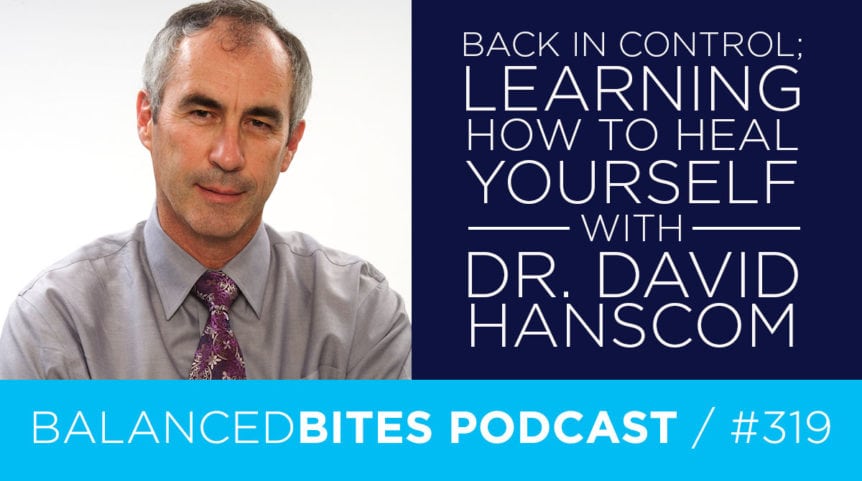

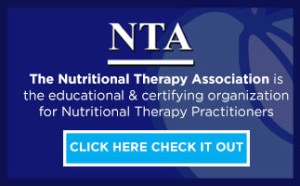

Comments 1
The neural pathways can be repaired. See Dr. Curtis Cripe of NTL Group and Crossroads Institute. Also, check out Dr. Frank Lawlis’ book Psychoneuroplasticity. True healing occurs in addiction and trauma treatment facilities and therapy. Judy Crane author of the Trauma Heart and CEO of world renowned addiction and trauma treatment facility, The Guest House Ocala, is the expert in this field. She brings together all aspects of healing and hope.
This is amazing stuff and these folks are on the cutting edge of scientific and medical breakthroughs. The mind, body and spirit all function as one. Bill Wilson had the right idea when he started Alcoholics Anonymous. Now there’s science that proves it. I hope you’re able to follow through on this subject. Thanks for your time. I am living proof that it works!
Love Well,
Lisa Coverdale
219-921-3885